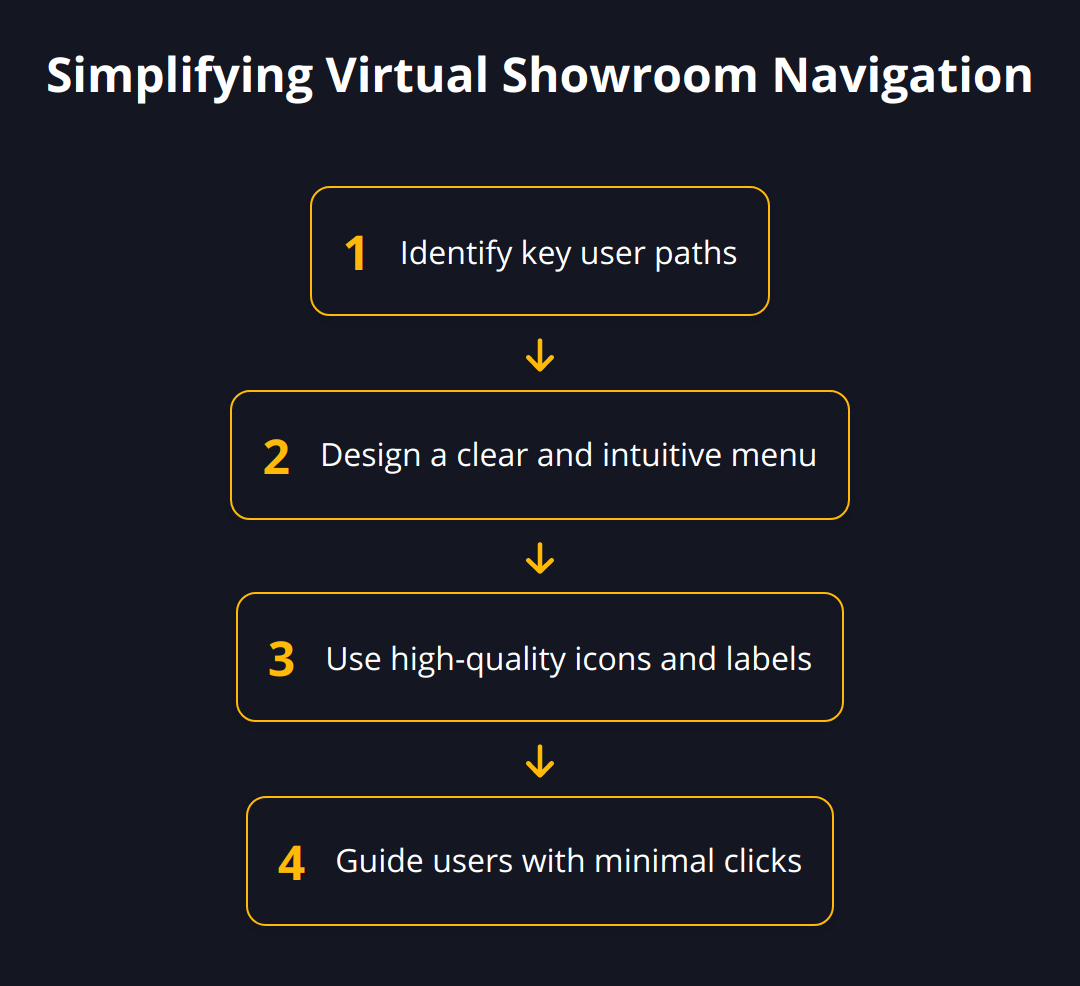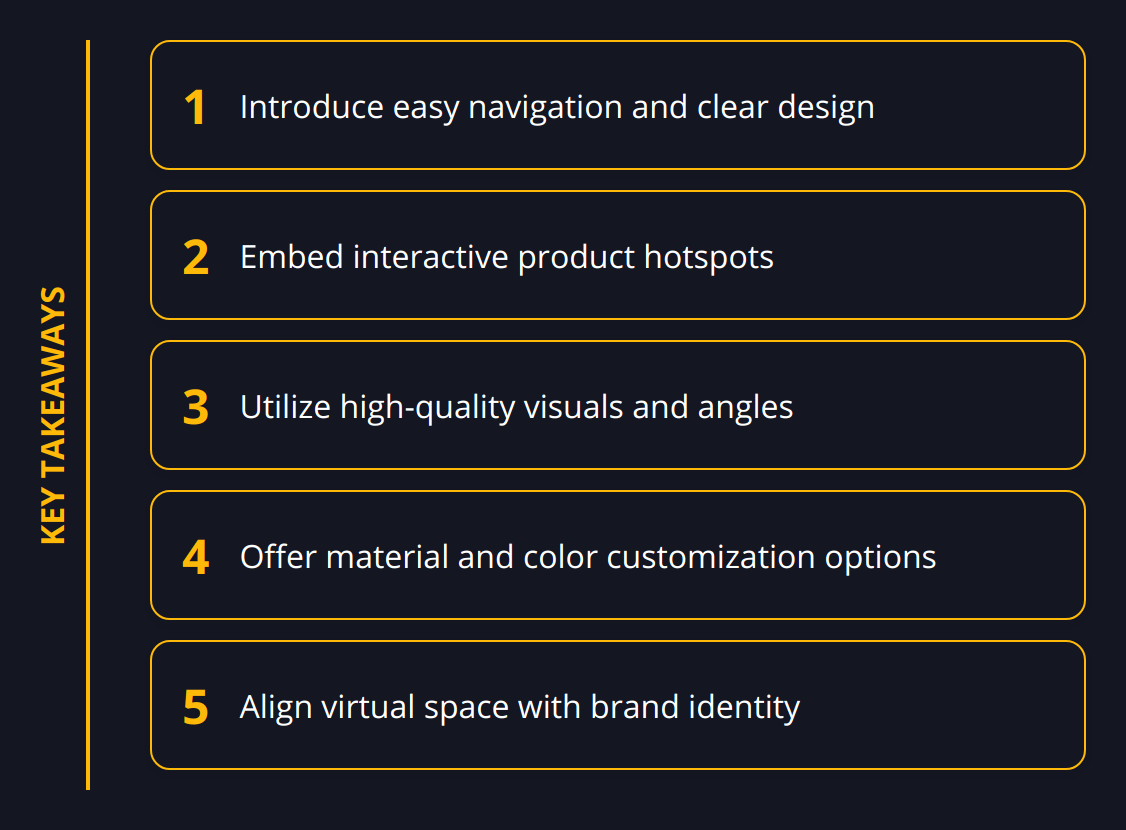Welcome to the future of product showcases and consumer engagement. At Newroom Connect, we understand the dynamic shift in how businesses connect with their audience and the pivotal role that virtual showrooms play in this transformation.
Understanding the landscape of virtual showrooms is fundamental for businesses looking to innovate and stay ahead of the curve. Explore the ins and outs of crafting impactful virtual experiences with us, as these digital spaces redefine the art of presentation and customer interaction.
What Defines a Virtual Showroom
A virtual showroom is a digital space where businesses present their products and services in an immersive, interactive environment that transcends the limitations of geographical boundaries and time zones. Unlike traditional showrooms, these spaces are not confined to the physical world. They invite users to explore, learn, and engage with products through a computer or mobile device.
The strategic move to virtual showrooms offers a compelling list of benefits over their physical counterparts. They are more cost-effective, eliminating the need for large, physical spaces and the expenses that accompany them. Virtual showrooms are easily updated and maintained, making them an excellent long-term investment. They’re also accessible 24/7, allowing for a constant flow of potential customers from around the globe.

Crucial drivers behind these immersive online experiences are advanced technologies like 3D modeling, virtual reality (VR), augmented reality (AR), and web programming. These technologies bring products to life, allowing for interactive elements such as clickable hotspots for detailed product information or videos, 3D animations that showcase products from every angle, and material selection tools for customization.
Let’s delve into actionable insights:
-
Cost and Accessibility: A virtual showroom is significantly less expensive than maintaining a physical space. You save on rent, utilities, and the cost of staffing. Easy online access also means your audience can visit your showroom anytime, increasing your reach substantially.
-
Engagement and Customization: The interactive nature of a virtual showroom captivates visitors. Features like 3D product visualizations, interactive elements, and the ability to customize products in real-time can deepen customer engagement and drive higher conversion rates.

-
Ease of Updates: Changing a product range or launching new items is as simple as updating a website. This ensures that your showroom remains up-to-date without the need for costly and time-consuming physical resets.
-
Measurement and Analytics: Track visitor behavior within your virtual showroom with precision. Understanding what your customers are interacting with can inform business strategy and product development.
To leverage this trend effectively, it’s essential that these digital showrooms integrate seamlessly with existing marketing strategies and tools. Take a look at our insights on integrating 3D showrooms for comprehensive guidance on how to make virtual spaces work for your brand.
For those considering this shift, it’s evident that virtual showrooms are not a fleeting trend but a transformative tool that reshapes the customer journey. By addressing the challenges of the digital age, they present a forward-thinking solution for any brand that wants to expand its horizons and connect with a broader audience effectively.
Crafting Interactive Virtual Spaces
Elevating user experience is pivotal in designing a virtual showroom that not only draws in visitors but convinces them to stay, explore, and ultimately convert. A well-crafted user interface, intuitive navigation, and responsiveness across various platforms are foundational for any virtual environment intending to be engaging.

Interactive elements are the heart of a compelling virtual showroom. Incorporating multimedia such as video demonstrations, audio descriptions, and high-resolution images can dramatically enhance the depth and appeal of the showroom. However, it’s not just about dazzling users—it’s about providing value and context that enrich their decision-making process.
For instance, the creative incorporation of video tutorials within your showroom can demonstrate product usage or showcase unique features, directly influencing customer understanding and satisfaction. Meanwhile, employing a material picker allows users to visualize products in different colors and finishes, giving them a sense of ownership and personalization.
Yet, all the interactivity and multimedia won’t matter if they don’t resonate with what your brand stands for. Creating a brand-centric environment means infusing every corner of your virtual showroom with your brand’s persona—its values, aesthetics, and narratives. This solidifies brand identity and aligns customer experience with your overall marketing strategy.

Practical Steps to Bring Your Virtual Showroom to Life:
-
Ensure simplicity and clarity in design to facilitate easy navigation and product discovery.
-
Embed interactive hotspots that reveal in-depth product information when clicked.
-
Use high-quality visuals to present your products in the best light and from multiple angles.
-
Incorporate customization options, like a material and color selector, for a personal touch.
-
Create immersive narratives around your products with videos and audios that tell a story.
Remember, the goal is to design a virtual showroom that’s inviting, informative, and memorable—one where every interaction is an opportunity to reinforce your brand’s image and build customer relationships. Your virtual showroom should not just be a space to browse products, but an immersive brand experience that captivates and converts.
Virtual Showroom Best Practices
Designing a virtual showroom is an intricate process that necessitates a blend of aesthetic appeal and functional precision. When done right, it can transform the customer experience.
Firstly, navigation is the pillar of virtual showroom design. It needs to be intuitive to ensure that users can move through your digital space with ease. Complex navigation menus can intimidate and confuse users, leading them to abandon the experience altogether. A rule of thumb is to guide visitors through the most critical paths with as few clicks as possible. High-quality icons and clear labeling go a long way in simplifying navigation.

Another vital element is cross-platform compatibility. With the diversity of devices in use today, your virtual showroom must perform flawlessly on desktops, tablets, and smartphones. Responsive design is the answer to this challenge, allowing your digital environment to automatically adjust to the screen size and resolution of the user’s device. Tools such as Google’s Mobile-Friendly Test can give you a quick evaluation of your showroom’s mobile compatibility.
Integrating analytics is like installing a navigation system for your business strategy. It’s not just about numbers; it’s about actions and reactions. By analyzing how visitors interact with your virtual showroom, you can identify popular products, dead zones, or user flow bottlenecks. Using this data, you can continually optimize the user experience. Google Analytics gives detailed insight into user behavior and can be easily incorporated into most virtual environments.
In practice, here are essential guidelines to follow:
-
Simplify User Journeys: Keep navigational paths straightforward and limit the number of user decisions.
-
Optimize for All Screens: Regularly check your showroom’s functionality across different devices and platforms for a uniform experience.
-
Harness Data Wisely: Use analytics to understand visitor preferences and optimize product placements and informational hotspots accordingly.
Remember, these are not mere suggestions but imperative actions for anyone serious about competing in the digital showroom space. Therefore, consider visiting our guide on 3D product visualizations to further enhance the quality of your virtual showroom content.
In conclusion, the creation of a successful virtual showroom is about striking the right balance between form and function. Keep your design user-centric, think like a visitor, and continually adapt to their needs, and you’ll create a virtual space that doesn’t just display products but sells them.
Wrapping Up
In essence, the essence of virtual showroom design lies in its ability to provide an immersive, interactive, and highly personalized shopping experience. The shift to virtual showcases reflects a broader trend towards digital engagement, opening up a world of possibilities for businesses across various sectors. Virtual showrooms eliminate the constraints of time and space, drawing in a global audience and operating around the clock. The use of sophisticated 3D models, AR, and VR technologies elevates the user experience to new heights, empowering customers to explore products in detail and at their own pace.

The significance of virtual engagement continues to grow as consumer behaviors evolve and online experiences become more sophisticated. We at Newroom Connect are at the forefront of this evolution, aiding companies in harnessing the power of virtual spaces for trade fairs, showrooms, and e-learning platforms. By incorporating virtual showrooms into their operations, businesses can drive growth, increase customer satisfaction, and reduce costs.
To thrive in the competitive digital landscape, companies must embrace these innovative tools. Here lies an opportunity to not only present products in novel ways but also to forge deeper connections with customers. The statistics speak for themselves; enhanced engagement through virtual showrooms leads to higher conversion rates and more impactful customer interactions.
Embrace the virtual wave and let your brand’s digital presence flourish. Visit Newroom Connect and explore how our platform can elevate your company’s virtual experience.
In summary:
-
Virtual showrooms offer cost-effective, engaging, and accessible product presentations.
-
Advances in technology ensure interactive and immersive customer experiences.
-
Virtual engagement is becoming an essential aspect of business strategy, with significant growth potential.
-
Virtual spaces are a sustainable investment creating global reach and operational efficiency.
As businesses continue to navigate the digital transformation, the embrace of virtual showrooms is not just an option—it’s a smart business move. Harness the potential of these innovative spaces and watch your business thrive in a digitally connected world.


